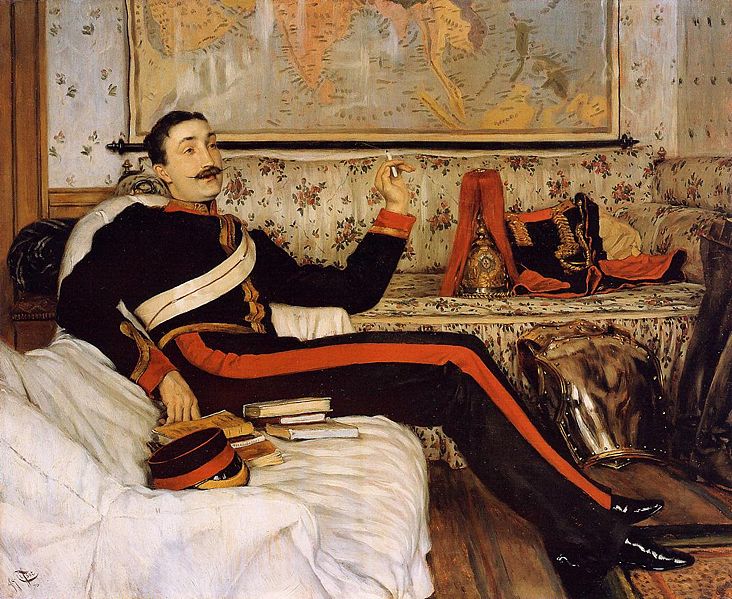To mark National No-Smoking Week in slightly mischievous fashion, this week’s picture is one of the most dashing portraits ever painted of a gentleman enjoying a cigarette: James Tissot’s depiction of that quintessentially elegant and adventurous Victorian army officer, Frederick Gustavus Burnaby, which hangs in the National Portrait Gallery in London.
Tissot first exhibited the picture at the London International Exhibition of 1872, where its bold handling of paint and even bolder colour harmonies, contrasting the splendid red and dark blue of Burnaby’s uniform with the pale décor of the room in which he sits, were widely admired. The artist presented the work as his calling card, designed to announce his recent arrival in the English capital. Born in France, Tissot had lived and worked in Paris for more than a decade until the events following the Franco-Prussian War forced his departure. Having lent his public support to the Commune during the Siege of Paris he fled to London shortly afterwards as a political refugee. Once there, he found that there was little call for the narrative and historical pictures which had hitherto been his speciality, so turned his hand to portraiture instead.
The man who sat for this portrait, Frederick Gustavus Burnaby, was without doubt one of the characters of the age. An associate of the Prince of Wales and a talented linguist, he was an intrepid and frequently impetuous adventurer whose colourful personality and tales of derring-do captivated Victorian society (and later provided much of the inspiration for George MacDonald Fraser’s fictional character Harry Flashman). Born in 1842, the son of a clergyman, Burnaby was educated at Harrow before entering the Royal Horse Guards in 1859. Six foot four inches in height, he was reputed to be the strongest man in the British army, and to have...


